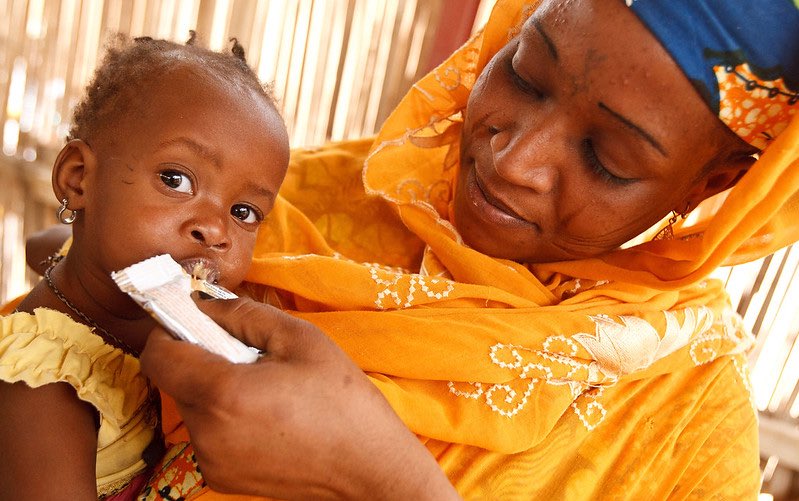Across the world, 144 million children under the age of 5 (21.3%) suffer from stunting and 47 million (6.9%), from wasting, a form of acute malnutrition (see Box 1), according to the latest joint estimates on child malnutrition from UNICEF, WHO, and the World Bank. These numbers clearly represent a major public health challenge, in particular because child acute malnutrition is strongly linked to child mortality: Children with moderate acute malnutrition are 3.4 times more likely to die than are well-nourished children; children with severe acute malnutrition are 11.6 times more likely to die. And yet, when it comes to the number of children suffering from acute malnutrition every year, 47 million is almost certainly an underestimate.
What is the problem with the global estimates?
Current estimates are likely undercounting the total number of children experiencing acute malnutrition throughout the year because of the methods used to calculate them. The data used to compile global estimates for both stunting and acute malnutrition are obtained from a large set of cross-sectional surveys, which assess children’s weight and height at a single point in time, providing a snapshot of the nutritional status of these children. For chronic conditions like stunting, such snapshot (or prevalence) data give a good approximation of the number of children who suffer from this condition each year.
Unlike stunting, acute malnutrition is not a chronic condition. Children in vulnerable contexts can lose body weight due to poor feeding practices and infections, but when treated can also put on weight quickly and get well. And children who recover may relapse later. Episodes of acute malnutrition can range from a few days to several months. Consequently, snapshots gathered from cross-sectional data will not capture the total burden of acute malnutrition—that is, the total number of cases over the course of a year, as demonstrated in the animation below.
How can the annual burden of acute malnutrition be accurately estimated?
The best way to accurately estimate the total number of episodes of acute malnutrition in a year is to take frequent anthropometric measurements of a representative cohort of children over several months. In practice, however, establishing cohorts with repeated measurements for large-scale surveillance purposes is excessively expensive. Data on the incidence of acute malnutrition (the number of new cases that appear over time) obtained from longitudinal surveys are thus rarely, if ever, available for low-income settings.
Epidemiologists have therefore developed the incidence correction (K) factor to enable the conversion of prevalence data gathered from cross-sectional surveys into the cumulative incidence or total number of people affected by an acute condition over a set timeframe. Only a few K-factor estimates are currently available—and of those that are, many either were derived from decades-old data or suffer from other limitations that would likely affect resulting estimates.
New incidence correction factors
In our recent publication in the American Journal of Epidemiology, we used longitudinal cohort data from two randomized controlled trials (PROMIS studies) to calculate new incidence correction factors for moderate and severe acute malnutrition in two health districts in Mali and one in Burkina Faso.
We calculated K-factors for severe acute malnutrition of 9.4 in Burkina Faso and 5.7 in Mali, and for moderate acute malnutrition, of 4.7 in Burkina Faso and 5.1 in Mali. This implies that the number of children with episodes of severe acute malnutrition may be six to nine times higher than estimated using prevalence, and the number of those with moderate acute malnutrition, about five times higher. Of the estimated 47 million children under 5 with acute malnutrition in 2019, 14 million suffered from severe acute malnutrition and 33 million from moderate acute malnutrition. When we apply the the corresponding K-factors (6 and 5, respectively) to these prevalence numbers—with the caveat that these are based solely on data from West African children under 2 years old—we find that, in fact, up to 295 million children likely experienced acute malnutrition in 2019.
We repeated the calculation of K-factors, limiting the criteria defining acute malnutrition to low mid-upper-arm circumference or presence of nutritional edema only, since some humanitarian programs working in rural communities often rely on this more limited definition. However, using these two criteria did not lead to significantly different K-factors.
Moving forward
Policy makers and nutrition program implementers often use prevalence data to project caseloads and allocate the resources needed to treat acute malnutrition. Our analyses show that using prevalence to calculate the annual burden of acute malnutrition considerably underestimates the true number of cases that occur annually. Mortality caused by child acute malnutrition might be underestimated as well. This finding calls for immediate allocation of far greater resources to prevent and treat acute malnutrition in low-income countries.
Francisco Barba is a Research Analyst with IFPRI’s Poverty, Health and Nutrition Division (PHND); Lieven Huybregts and Jef Leroy are PHND Senior Research Fellows.
This research was funded by the Children’s Investment Fund Foundation and Innocent Foundation through the No Wasted Lives Framework. The PROMIS project was funded by Global Affairs Canada and by the IFPRI-led CGIAR Research Program on Agriculture for Nutrition and Health (A4NH).







